STIG B-III Mission Report

STIG B-III mission, January 5, 2013 update by Neil Milburn, posted 02/28/2013
I know that it is a rather trivial issue in the grand scheme of things, but the border crossing at the New Mexico Port of entry was the smoothest yet; 10 min. from wheel stop to wheels rolling. Again, our two-day launch preparation protocol served its purpose because the cold weather delayed our dry run until the second day. We had a little snow, ice, and fog throughout the launch. We also had subfreezing temperatures which cause problems with battery charging, something that needs a more permanent solution for future launches.
This was our third licensed launch with STIG B and our sixth total for the STIG class of vehicles. This together with all the wet dress, tie-down, hot-fire tests at Caddo Mills, the upgraded vehicle handling equipment and modifications to the launch control trailer has made the process of preparing the vehicle, integrating payloads and launching a very fast routine. This would prove to hold us in good stead as launch time approached!
Wednesday night it had lightly snowed in Las Cruces but as we headed north to Truth or Consequences with the vehicle trailer, we discovered that the snow had not made it to the launch site at all … but it was very cold. The trip to the southern vertical launch area via Truth or Consequences takes just over two hours but is the only feasible route until the southern access road is improved. That will ultimately take an hour off the trip.
The routine now is that the launch control trailer and the crane truck station beside the launch pad until the team arrives in the crew van by the southern route. The launch stand and any other equipment required to set up pad operations are dropped there before the trailer is pulled in a straight line to a point just the other side of the dirt access road with the rear door of the trailer facing the launch pad. Dropping the trailer rear door now allows the four-wheeler and the rocket trailer to be hauled outside directly onto the dirt road for any work outside the confines of the trailer.
Unpacking the trailer and preparing for launch is an all-hands exercise but in less than a couple of hours after arrival, everything is in place for payload integration and the dry run. On the day of launch it takes less than one hour after arrival to have everything in place outside. The trailer is just not quite big enough, even though it’s the longest available in its class, to install the payload module and nosecone inside. It is big enough that work can be done on the payload module itself, charge batteries and do the tightness checks before buttoning up the propulsion module with the fin can. It does get crowded at times in the trailer with payload workers and the team.
There are thoughts on having a permanent 53-ft container, or two, for the actual work on the rocket and, banked up with dirt for insulation and even impact protection, this would serve as vehicle preparation, payload integration, nosecone and recovery section installation facilities. The launch trailer would purely be for launch ops and transportation. There is a permanent generator on location that could be used for light, heat and AC for the summer months.
The cold is definitely an issue that we need to address on future vehicles. We purchased some electric blankets from Wal-Mart as a temporary measure and wrapped the batteries throughout the night to prevent them from getting too cold but they are attached to a rather large heat sink in the form of the aluminum rocket. The blankets did a respectable job but we need a more permanent solution in the form of heat tape, external power source and insulation preferably with a thermostat so that we can regulate the battery temperature through the night. If we make a decent job of this there should be no reason we can’t leave the vehicle on the launch stand overnight if desired.
The Stanley electric space heaters were next to worthless (don’t remember them being that bad when we first bought them but we pointed one directly inside the fin can to help keep the RTT batteries warm. The breaker on the diesel generator trips if we run both heaters together with the vacuum pump needed for one of the payloads and we couldn’t afford to have that drop out in the middle of the night. We are really close to the limit for our generator but it was the most reasonably priced diesel generator before we started looking at a machine costing several thousand dollars. We added an auxiliary diesel tank so that it can run overnight at full power without needing to refuel.
One thing that we have learned by experience is that we need to power up the vehicle and in particular the GPS to let it “learn” where it is. The last time it gets fired up is at Caddo Mills and it takes the Novatel GPS some time to figure out this isn’t Texas Toto and start to get a solution; sometimes as long as twenty to thirty minutes. We’ve second guessed faulty connectors more than once in the past. The second time it fires up the process only takes a few minutes before it locks in a solution. We use a combination of the FAA’s GPS RAIM Prediction Tool and n2yo.com’s satellite tracking function to determine the quality of GPS coverage. Typically, the GPS coverage at the launch site is good to excellent. The same cannot be said for telecommunications! Cell coverage is abysmal.
Having mentioned GPS issues, the first problem we came across on Thursday was that it took a long time for the GPS to acquire a lock … a very, very long time. In fact, it wouldn’t! This time around we did find a hardware issue, a loose connector that, once found, was a thirty minute repair but by the time we had remedied the problem and verified that the GPS was operational, it was too late in the day to begin the dry run and we decided to delay until the Friday. It was precisely for this kind of problem that we built in the second preparation day as a buffer.
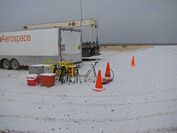
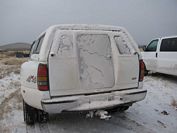
On the Friday we had quite dense fog and icy roads that made for interesting traveling to the launch site but regardless we were on the pads by early morning with a little snow on the ground. The heaters had done a reasonable job of keeping the batteries warm and the preparations for launch thereafter went quite smoothly albeit really cold.
FAA/AST agreed that we didn’t need to conduct the dry run on the launch stand and we simply wheeled the vehicle outside on its trailers with the four-wheeler and conducted the dry run like that. Final preparations went very fast and we scheduled the Mission Readiness Review at the Spaceport offices in Las Cruces for 5:30 p.m. Fifth time total and third time for STIG B, the last three in the space of three months, the MRR is becoming second nature and having the same spaceport team for every launch makes things go very smoothly.
Saturday the weather did not want to cooperate! Again we had early morning fog which was supposed to burn off by 9:00 a.m. but apparently it didn’t get the message. The ground fog lifted but the ceiling was way below the 5,000-ft AGL that we needed to be in compliance with the flight rules for our license. We can now launch through solid cloud cover proviso we have at least a 5,000-ft ceiling and 10-nm visibility.
The cloud cover was close to 100% and down at 2,000-3,000 ft AGL. No Go! There were reports of clearing from the NW but it was getting late before we saw even patches of blue sky in that direction. We decided, belatedly, to erect the vehicle on the launch stand and take care of our standard checklist items right up to the point at which we load propellants … and then wait.
We finally had enough confidence that we could get the launch away inside the noon window at around 11:00 a.m. local time. The window closes at noon and we have to be back on the ground at that time. We had set a deadline of 11:30 a.m. to give us a few minutes buffer but early in the propellant loading we had a minor LOX leak that lost us those few precious minutes. The leak eventually sealed itself as we got some back-pressure behind the valves but we were now up against the clock as the skies opened up to clear blue.
We agreed with the FAA/AST observer that we could cut the total mission time down to precisely that needed according to the TAOS trajectory runs for the maximum projected altitude, 19-minutes, which meant that we had to launch by 11:41 p.m. latest. The pad team worked steadily through the last minute preparations & close-out and began the retreat from the pad area with less than two minutes remaining. As the countdown was conducted, we hit the launch button with only twenty seconds before the clock ran out on us!
The boost was clean and we cleared the launch stand without drama. It was visually obvious even at this early stage that there was minimal drift compared to the prior two launches and the increased gains appeared to be achieving the desired goal. Also, the dry line sensor did not appear to be a problem and there was no trapped bubble. Had there been, then the capacitor and resistors that had been installed to change its mode of operation would have allowed for sufficient time to clear the line once propellant started flowing.
However, the GPS drop-out came back to haunt us. We had raised the GPS antenna up on a stalk inside the recovery section so that there was minimal chance of any satellites low on the horizon being shielded by the recovery section tubing but this was not the final solution. The GPS signal strength dropped as soon as the engine lit and the suspicion is that it is caused by engine and wind noise.
We did not see this on the tie-down, hot-fire test but in that case the vehicle is raised some ten to fifteen feet above the ground. The real problems though began when we hit 70-m/sec with the PDOP exceeding 500 and eventually losing signal altogether. It recovered again when the velocity dropped below 70-m/sec but we should be careful to avoid the trap of making a simplistic assumption. Russ undertook a detailed analysis of the GPS from all the past flights to make sure we’re not missing anything.
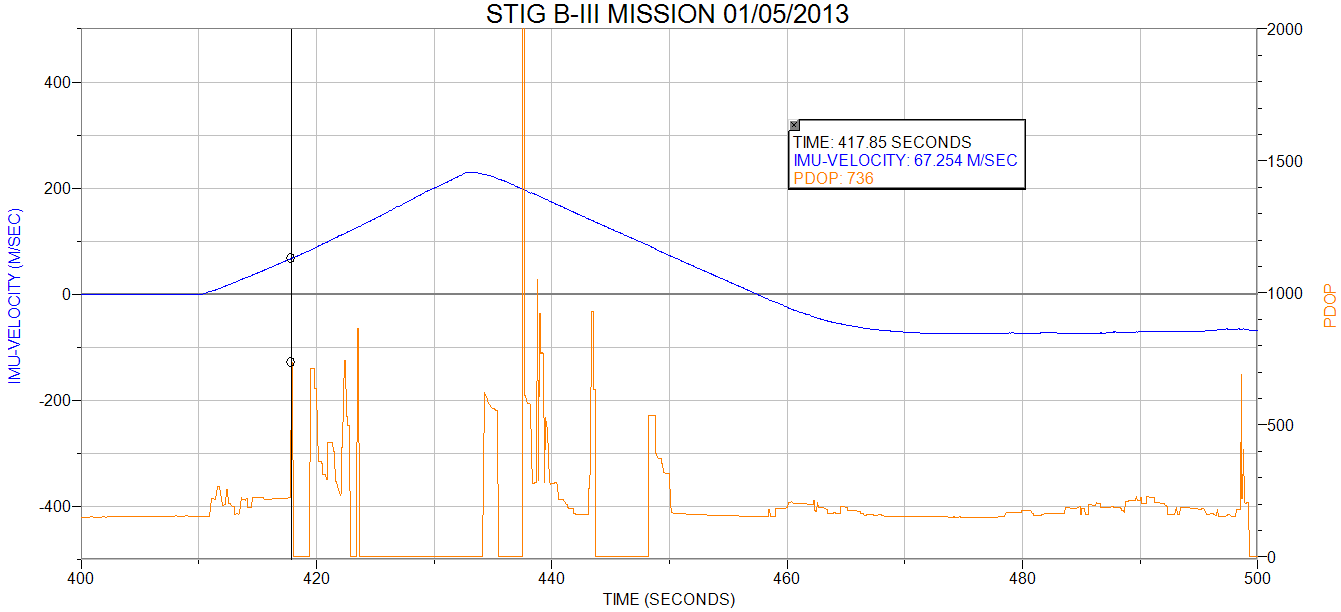
Above is the graph of PDOP versus z-axis vertical velocity. At 70-m/sec the PDOP exceeds the 500-limit we have and even loses resolution completely for a few seconds. At T+14 we lose the signal altogether and it remains that way for more than 10-seconds at which time the MFC (Main Flight Computer) terminates the thrust per the flight rules. Shortly thereafter we started to get intermittent but weak GPS until at T+40 during the coast phase we again acquire a solid GPS fix.
Russ’ analysis revealed that the GPS is suffering from two ailments; (i) Noise from both the engine and aero-acoustic sources is drastically affecting the separately mounted Novatel GPS and (ii) the nose cone APRS (Automatic Packet Reporting System) hammers the guidance when it transmits. The solutions are respectively (i) Possibly to revert to the KVH IMU with the internal GPS and add even more acoustic damping and (ii) inhibit the nose cone APRS through the boost, coast and most of the descent phase. Additionally, using a KVH / Novatel, which can accommodate two antenna inputs more than 1-m apart, (one in the nose and the other in the recovery section) should enhance the performance. Russ is writing up a more detailed report on the GPS.
The guidance which had been the bane of the last two launches appears to have been resolved. The graph below shows that the displacement from the launch pad as measured by the IMU was only 76-m at the time the boost was terminated. STIG B weather-cocked into the prevailing wind thereafter.
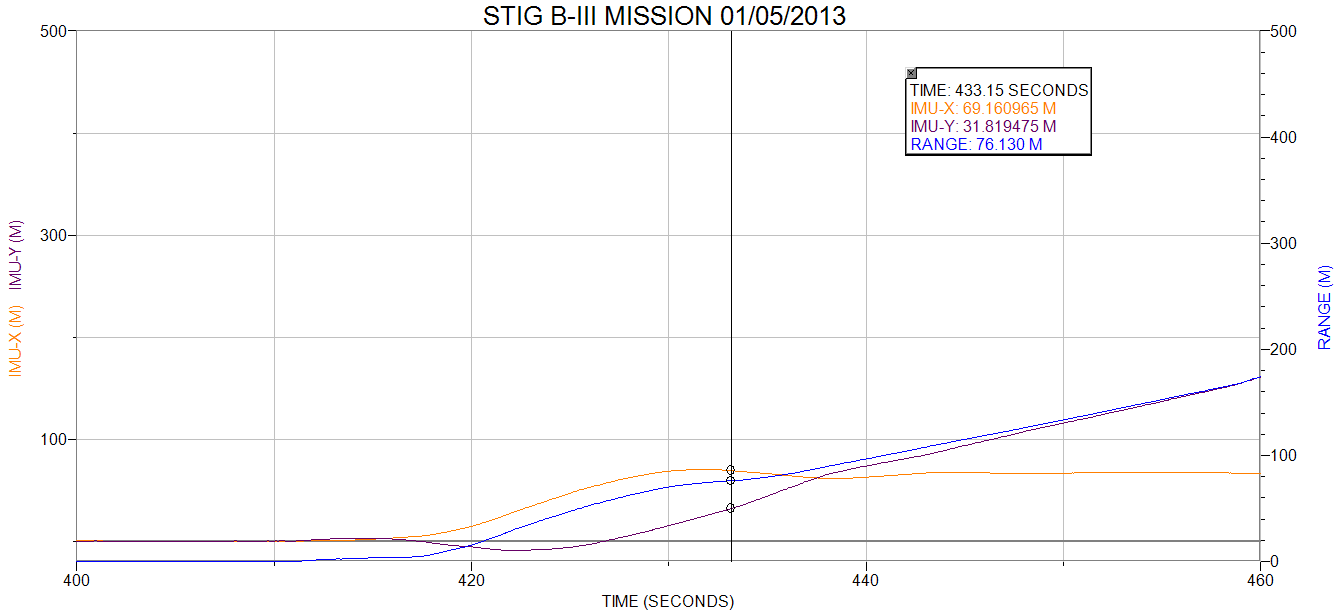
Similarly, the groundspeed which had been one of the mission terminating parameters on past missions never exceeded 7-m/sec throughout the boost phase whereas before it had rapidly exceeded 50-m/sec.
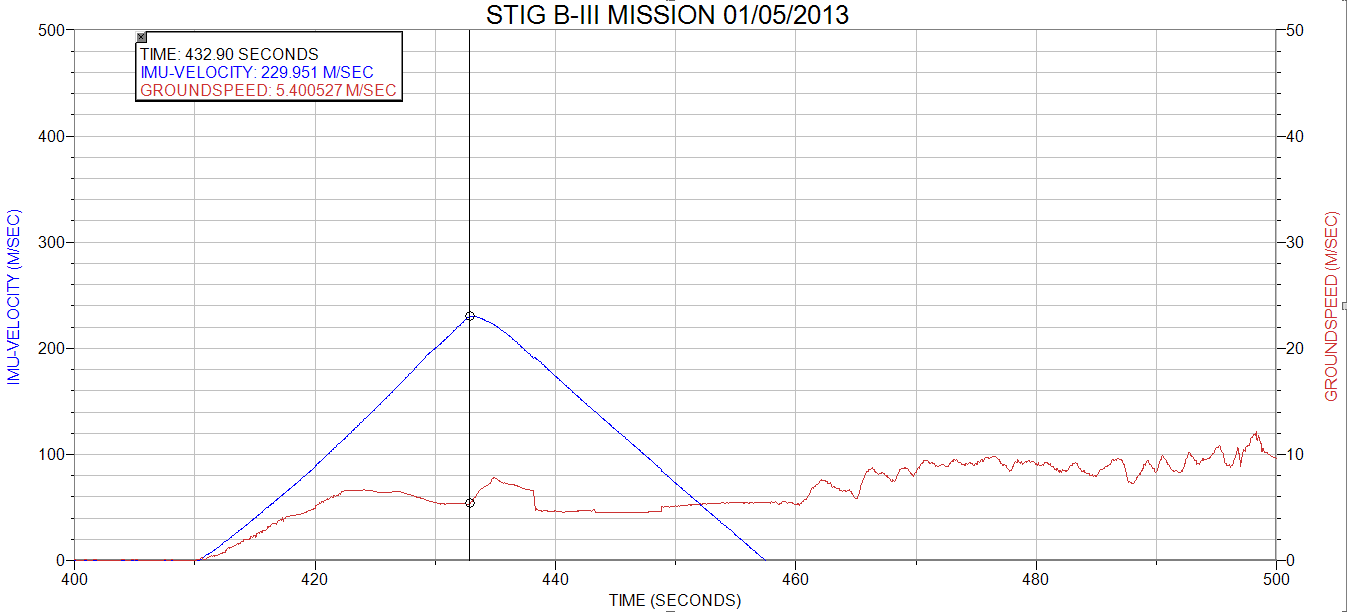
The timeline for the mission taking T0 at 408.6 seconds reads;
T+0 Ignition Sequence Starts
T+1.5 Main Propellant Valves Start to Open
T+2.4 Main Propellant Valves Full Open
T+24.1 Thrust Termination on Loss of GPS
T+24.6 Max Velocity of 230-m/sec
T+25.8 Chamber Pressure Decays to Zero
T+48.7 Apogee at 5,515-m AGL
T+49.7 Ballute & Nosecone Deploy w/ 1.8-G Shock Load
T+61.4 Vehicle Reaches Terminal Velocity of ~70-m/sec at 4,940-m AGL
T+87.6 Vehicle Descends Through 3,040-m, Main Is Triggered (but does not deploy)
T+87.8 Propellant Dump Commences
T+136.6 Vehicle Lands Hard Under Ballute at 55-m/sec (terminal velocity after propellant dump)
On boost there was the familiar kick to the roll angle which reached 50-degrees before reversing and settling out in the -10-degrees/second range until thrust was terminated. At that point the roll increased to -30-degrees/second until the ACS system kicked in and nulled out the rate just before apogee.
The ACS is a bit too “fidgety” around the desired null rate and it bounced in the +/- 5-degrees/second range. Having a two stage ACS with reduced pressure for fine control would reduce this further. Even at the observed rate, the radial G-load would be 2x10-4 G at the periphery of the vehicle.
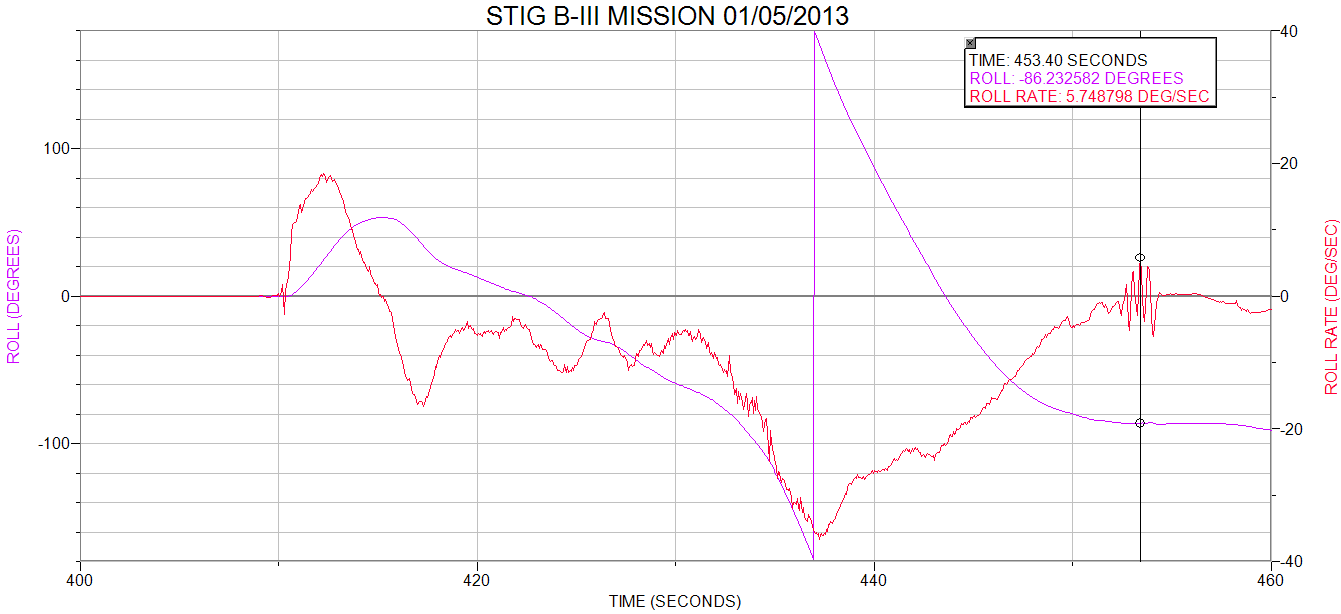
The pitch and yaw angles appear to be well controlled and the resulting alpha barely exceeded 4-degrees and this as the vehicle was attempting to correct for position and groundspeed. Just before thrust termination the vehicle was less than 2-degrees alpha and during the coast phase it never exceeded 5-degrees; the perfect attitude for deployment of the ballute and nose cone.
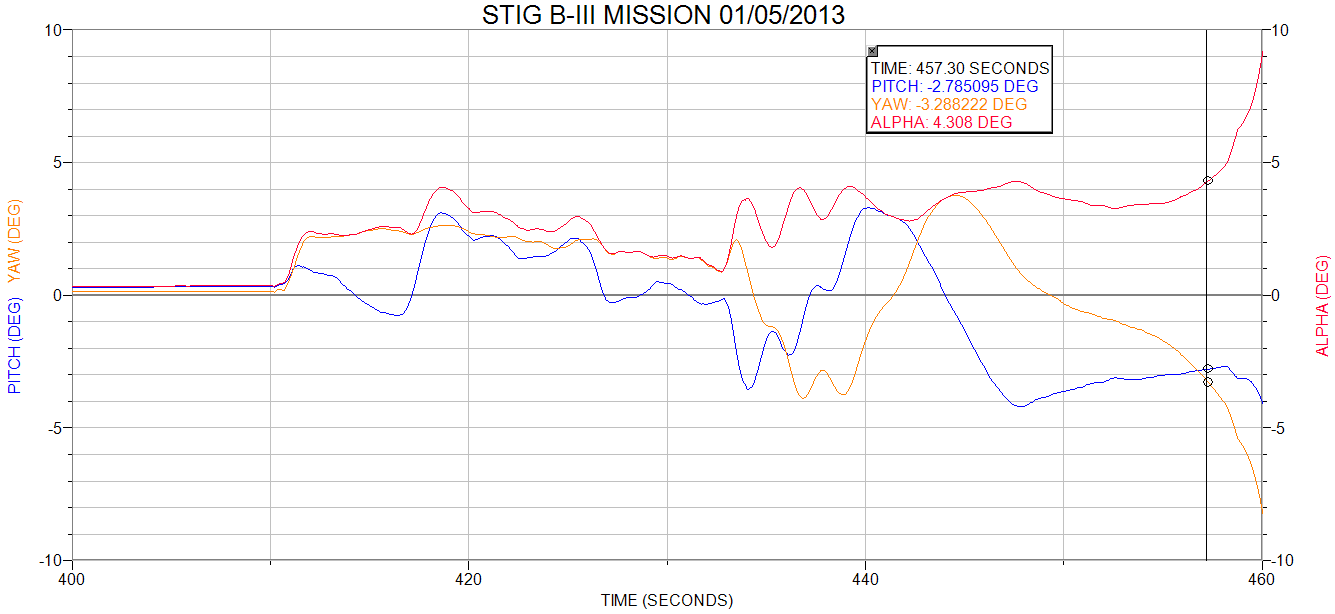
The shock loading from the nose cone and ballute deployment was very modest at just less than 1.8-G.

The trigger for the main was sent at the appropriate time and both the pin-puller and cutter fired as required. However, an anomalous release caused by a fluke hang-up in the recovery system prevented the main from pulling out of the deployment bag. A small ring caught in the corner of the rectangular ring through which it was supposed to slide and the 1,000-lb plus load from the ballute locked it into place.
Perversely, on contact with the ground, the pressure was released and the deployment bag popped open! This failure mode was not witnessed in the shop when the rig was tested numerous times in drop tests. Moreover, we have not been able to duplicate the failure with subsequent testing even knowing how it hung up. Regardless the recovery rig has been redesigned to eliminate the potential for a similar fluke failure in the future. A detailed report and the modifications are being prepared by Phil under separate cover.
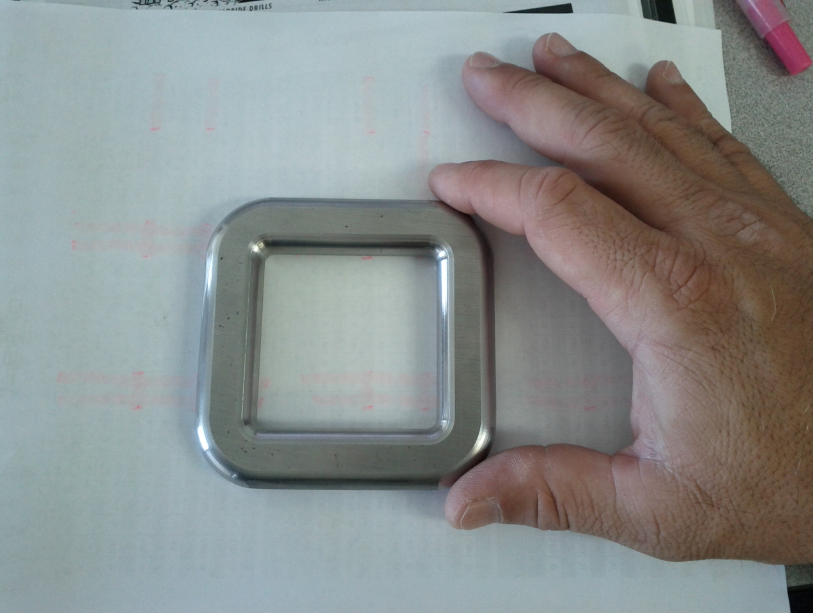

The debris field again proved our assertion that, even with residual propellants aboard, we do not get an explosion but rather a rapidly subsiding fireball with most of the debris being thrown by pressure release. The large debris was clustered around the impact site which was some 700-m from the launch pad at an azimuth of 143-degrees; roughly SSE. Two pieces of the fin can did “sail” to 50-m from the impact point but most all debris that did go any distance was very small and relatively light.
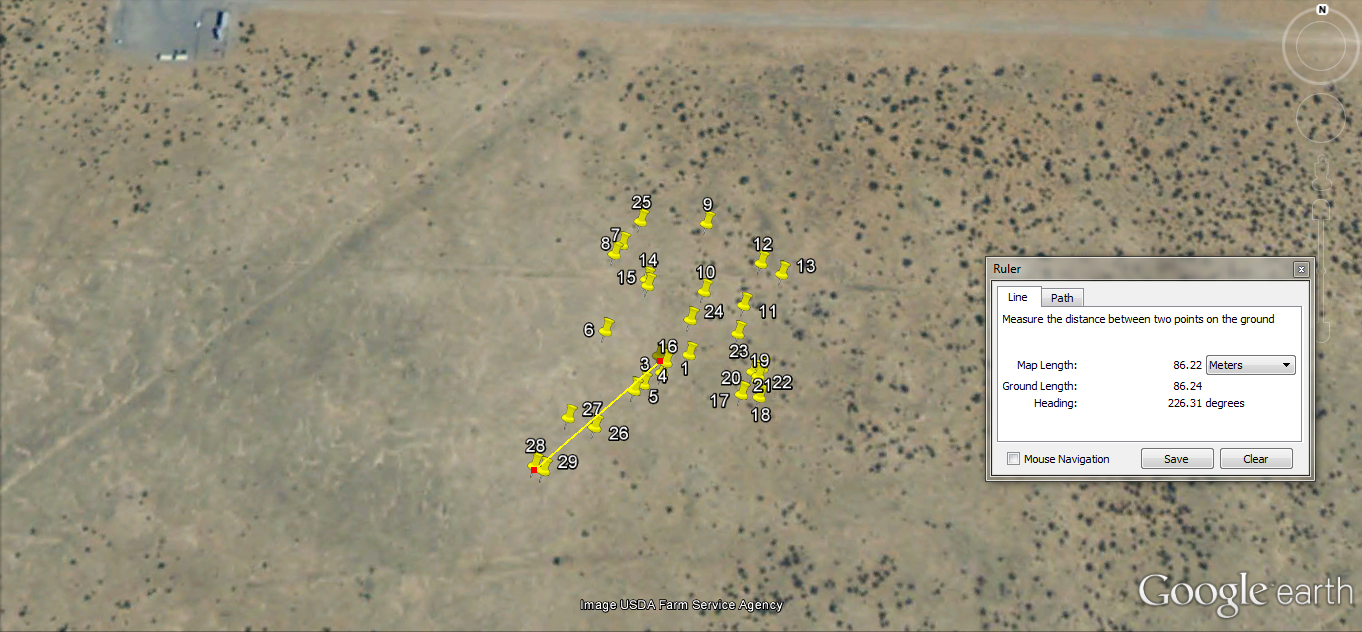
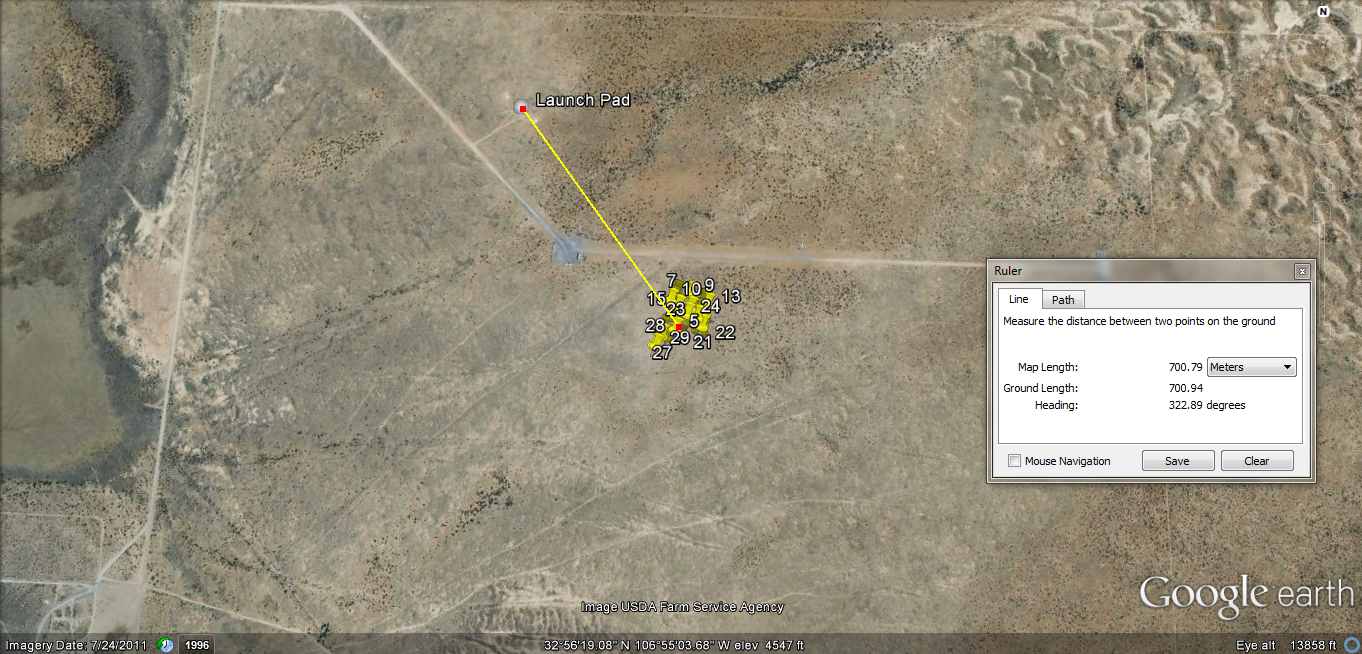
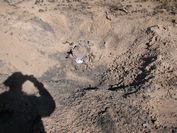
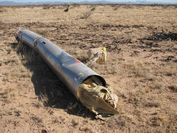
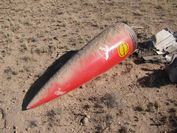
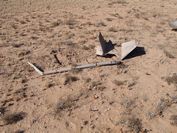
The formal debrief was held at the hotel. We had already surmised the cause of the failure and we agreed with FAA/AST representative, David Gerlach, that we needed to file a mishap report rather than an anomaly this time because of the loss of vehicle. We filed a verbal report with Dr. George Nield, and within five days filed a preliminary report per 14CFR 431 mandate.
Within a few days we received formal notification that our preliminary report was satisfactory and that the only formal resolution required was for the recovery system. Strangely, the GPS was not required to be addressed under this mishap because it is not considered part of the flight safety system per se. Again, all the debris was contained inside the Flight Hazard Area (with an order of magnitude safety factor) and our Thrust Termination System retains its 100% success record.
So much for the third time is a charm! It was to say the least a disappointment for the final flight of STIG B. However, we can take away many positives from the experience.
1. STIG B flew three times in almost as many months despite a modest amount of rework. In fact, the only reason that it wasn't in three months was because of conflicts arising from the Christmas and New Year holidays.
2. To the best of our knowledge this is the first time that a licensed, fully reusable, liquid bi-propellant rocket has been flown this many times.
3. On all three flights we integrated two separate payloads and they were all recovered intact despite the loss of the vehicle.
4. Much knowledge has been gained of the payload integration process, remote flight operations, and operating in the licensed regime.
5. Having obtained our first full license from FAA/AST, modifications to this license and even new licenses will be much easier to propose and to obtain.
6. Armadillo Aerospace has always maintained that the best and fastest way to make progress is to fly the hardware as often as possible. Modifications and upgrades to the recovery system, GPS, cold gas thruster ACS, and other systems have already been evaluated and are ready to be implemented.
7. Flying the vehicle has attracted the attention of many payload providers both government funded and private commercial. In fact, the interest generated has been encouraging and has reinforced our belief that the scientific payload market is real and viable.
The game plan moving forward is to build a mini fleet of at least three or possibly more STIG vehicles. This will allow us to campaign the STIG vehicle for commercial scientific payloads and even suffer some damage or loss of vehicle without having to halt the campaign for any considerable period of time. There will also be some modest reductions in vehicle costs by buying some components in quantity and simply by batch production. The one other major change that we are considering for STIG is to increase propellant tank sizes to offset the mass creep experienced with STIG B. This simple change, potentially with an increase in helium tank capacity, will allow the next generation of STIG vehicles to readily reach space with substantially larger payloads.
|